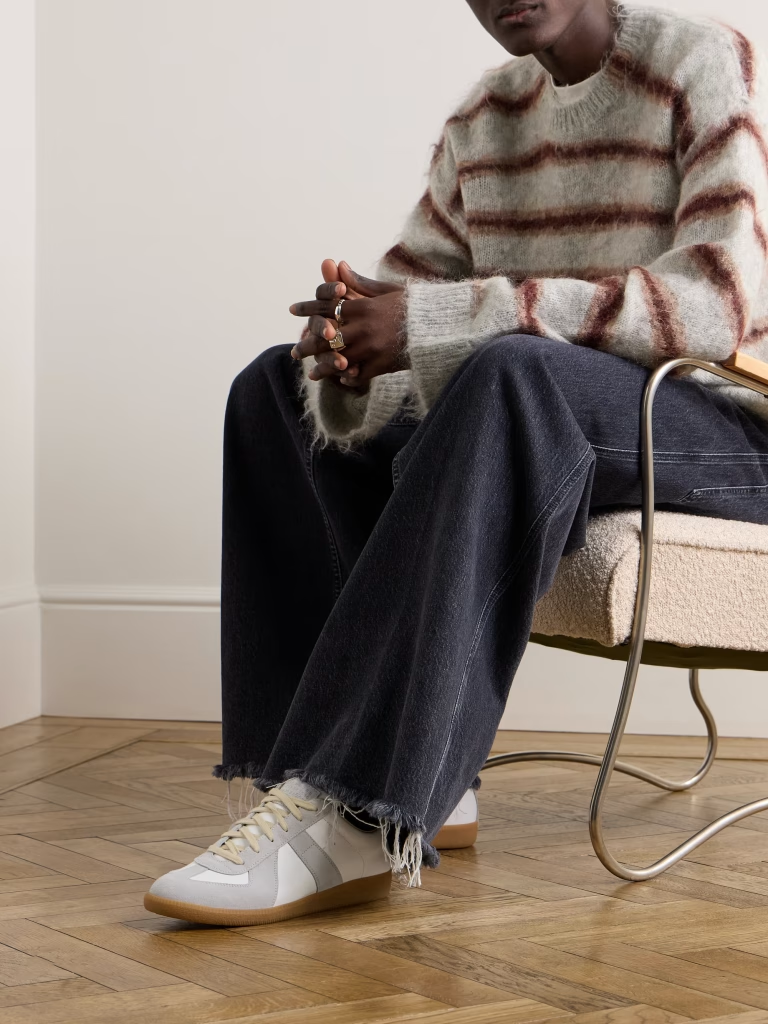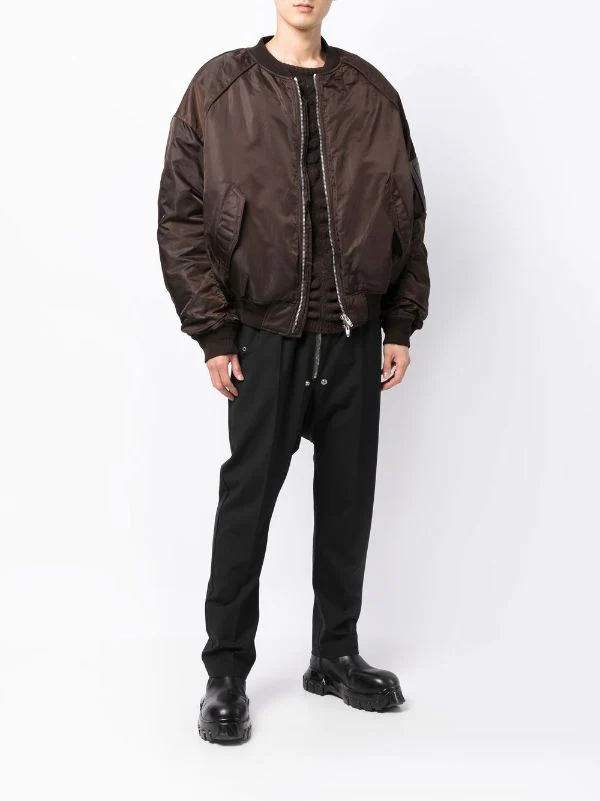In the deeper layers of fashion, where trends aren’t just worn but lived, sub-subculture fashion thrives. These are brands that don’t just cater to consumers—they resonate with communities seeking authenticity, identity, and a rejection of the status quo. For fashion professionals, understanding the dynamic between these brands isn’t about brand recognition—it’s about how they build on shared principles to craft narratives that go beyond the clothing itself.
Shared DNA in Sub-Subculture Fashion
While brands like CP Company, Cav Empt, and Stone Island are synonymous with utilitarian and functional aesthetics, they exist in a broader ecosystem where technical fabrics meet a dystopian ethos. These brands represent an evolution from the classic, functional pieces of streetwear, pulling from military and workwear inspirations but wrapping them in a package that speaks to a modern, almost futurist audience. This balance of practicality and aesthetics creates a distinct visual language recognized across various underground scenes.
On the opposite side, 1017 ALYX 9SM, Off-White, and Bottega Veneta bring a high-fashion sensibility to the sub-subculture space, blurring the lines between luxury and streetwear. These brands exemplify how industrial elements can coexist with the opulence of luxury fashion, leveraging minimalism and industrial design to craft wearable art. Fashion insiders will appreciate how these brands maintain a fine balance between accessibility and exclusivity—a constant dance of high-concept design that remains grounded enough to connect with urban culture.

The Experimental Core
At the heart of sub-subculture fashion are brands pushing the boundaries of what fashion can represent. Labels like Kiko Kostadinov, Post Archive Faction, and Isa Boulder strip fashion down to its architectural and conceptual roots, offering a less commercial, more cerebral take on streetwear. For the industry professional, these brands challenge traditional form and function, prioritizing conceptual design that resonates with an audience attuned to deeper meaning and structure.
Meanwhile, Fear of God, Rhude, and Aimé Leon Dore bridge the gap between streetwear and luxury. They appeal to fashion’s need for storytelling without sacrificing the accessibility that streetwear provides. Each brand builds its identity on craftsmanship and emotional resonance—an approach shared across brands like BODE, Acne Studios, and OUR LEGACY, whose retro-modern interpretations serve as touchstones for nostalgic yet forward-thinking collections.
Music and Fashion: A Cross-Pollination
Music’s influence on sub-subculture fashion cannot be overstated, and brands like ASSC CLUB, VLONE, and Trapstar are prime examples of this intersection. These brands are not merely aligned with music scenes—they are integral to them, becoming uniforms for the artists and fans alike. Brands like Denim Tears and Who Decides War take it a step further by embedding cultural and political narratives within their collections, appealing to those who view fashion as a medium for storytelling and activism.

This is also true of Gallery Dept., Marcelo Burlon, and Haculla, where street art, graffiti culture, and fashion intersect. The raw, unapologetic aesthetic these brands embody speaks directly to an audience accustomed to disruption, and to professionals, they represent the ongoing dialogue between art and fashion, a relationship that continues to evolve.
$$$ Meets the Street
For many sub-subculture brands, the merging of streetwear and luxury is an ongoing narrative. Casablanca, with its chic take on leisurewear, brings an element of glamor to a traditionally gritty genre. Similarly, Saint Laurent Paris and Vetements continue to oscillate between the high and low ends of fashion, merging street culture with a runway sensibility. The same can be said for Maison Margiela and Moncler, whose collaborative projects have further blurred the lines between luxury and street.
Fashion professionals will appreciate how brands like Fear of God, Juun.J, and Rick Owens manage to keep one foot in the world of high fashion while remaining deeply rooted in street culture. Their collections speak to an audience that understands the nuanced difference between wearing clothes and wearing a statement.
Innovation Through Heritage
In brands like Kapital, visvim, and Yohji Yamamoto, the industry sees a blend of craftsmanship and heritage that appeals to a niche yet devoted following. These labels represent the antithesis of fast fashion, opting for slow, thoughtful production methods that value tradition as much as innovation. Their focus on material and form ties them to other sub-subculture brands like Isa Boulder and Namacheko, whose avant-garde pieces challenge the boundaries of conventional fashion.
Meanwhile, the outdoors-inspired world of Patagonia and Carhart speaks to a broader cultural shift in which performance, sustainability, and function are no longer merely trends but essential values. ROA also fits into this landscape, bringing a hyper-functional, utilitarian approach that appeals to both the fashion-forward and the practically minded.

A Conclusion for the Professional Eye
What binds these sub-subculture brands is a shared refusal to conform to traditional fashion cycles. Their independence, whether through artistic expression, functionality, or cultural commentary, sets them apart. While each brand operates in its own niche, together, they create a broader tapestry of what fashion can represent in the modern age.
As the landscape of fashion continues to evolve, the sub-subculture space remains a fertile ground for innovation, experimentation, and authenticity. For fashion professionals, these brands are not just disruptors—they are the future. They reflect the shifting values of consumers who prioritize identity, community, and purpose over mere aesthetics. Brands like FFFPOSTALSERVICE, and Drama Call showcase the more obscure, experimental side of this fashion narrative, which, while niche, is no less critical in shaping the industry’s future.
Here are 10 of the most obscure
- FFFPOSTALSERVICE – An experimental, conceptual streetwear label known for its workwear-inspired designs but relatively obscure outside underground fashion circles.
- Deeptwon Harajuku – A niche brand drawing on the eclectic and avant-garde elements of Tokyo’s Harajuku scene, with limited visibility globally.
- Far Achive – An underground label that focuses on minimalist, deconstructed streetwear, with a small but loyal following.
- Professor E. – A lesser-known brand that blends conceptual design with modern streetwear aesthetics, often overlooked in mainstream fashion.
- Drama Call – A niche, rebellious streetwear brand that emphasizes bold graphics and subversive themes, popular with a niche crowd.
- Pet-Tree-Kor – Obscure even within fashion subcultures, known for its quirky and experimental design approach.
- Osbatt – An underground brand that mixes streetwear with an abstract, often DIY aesthetic, with limited mainstream exposure.
- sabukaru – A Japan-based streetwear label that embraces the local underground scene, with very little global recognition.
- YTSARCHIVE – A niche, archival-inspired streetwear brand with minimal visibility outside a dedicated, small fanbase.
- Victoria Ezinne Okereke – A highly obscure designer with a distinctive style, mostly recognized within very specific, niche fashion communities.
These brands operate on the fringes of fashion, appealing to highly niche subcultures while largely remaining outside the mainstream fashion narrative.

